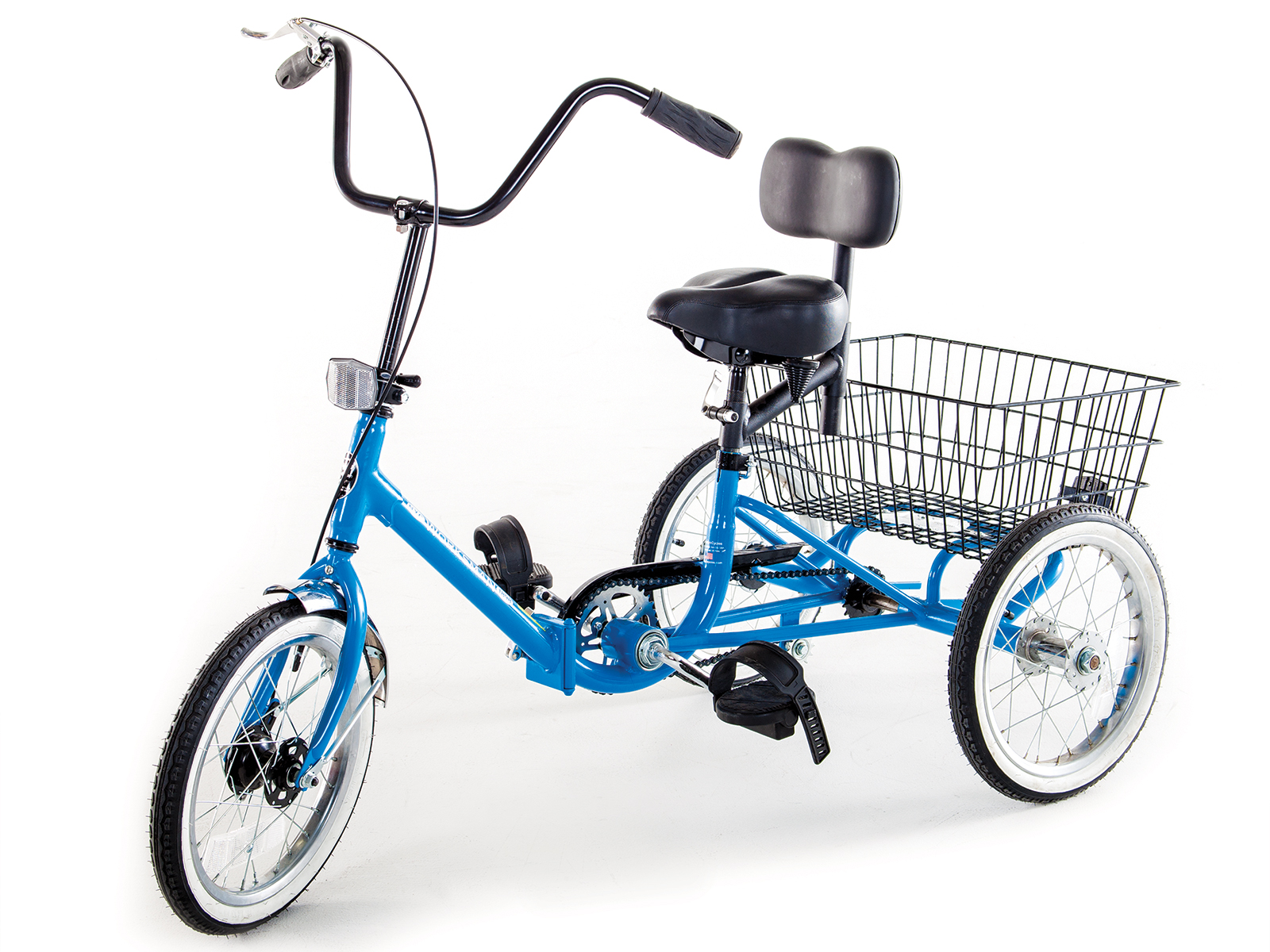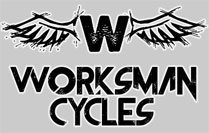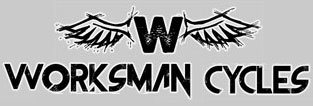Do Adult Three Wheeler Tikes Require More Energy to Ride?
 You want the calm of three wheels without feeling like every block is a grind. Maybe balance is a concern, maybe stop-and-go traffic makes two wheels feel risky, or perhaps you want to roll to the market without worrying about tipping. Then the doubt creeps in on the first hill or long stretch of headwind, and you wonder if the trike is making you work harder than a bike would. That feeling is real for many riders, and it has clear, mechanical reasons behind it.
You want the calm of three wheels without feeling like every block is a grind. Maybe balance is a concern, maybe stop-and-go traffic makes two wheels feel risky, or perhaps you want to roll to the market without worrying about tipping. Then the doubt creeps in on the first hill or long stretch of headwind, and you wonder if the trike is making you work harder than a bike would. That feeling is real for many riders, and it has clear, mechanical reasons behind it.
The short answer is yes for most upright adult tricycles. Three wheels usually take more energy than two because of weight, rolling friction, aerodynamics, and how a trike corners and is pedaled. The size of the difference depends on the exact trike, tires, gearing, rider strength, and terrain.
Why Stability Often Costs Extra Effort
Riders choose adult three wheeler trikes for stability at starts, stops, and slow speeds (It is crucial to recognize that some cargo bikes have three wheels, but not all of them). That stability comes from a wider footprint and a heavier, stiffer rear structure, which changes how energy is used with every pedal stroke. Instead of two tires on the ground, there are three contact patches, and instead of a narrow silhouette slicing air, the rear track and upright posture push more air. None of this is bad, but it does shift physics toward a little more work per mile. Understanding each piece will help you separate solvable setup issues from the inherent tradeoffs that come with three wheels.
Weight Drives Work on Starts and Hills
A typical upright adult three wheeler trike often weighs roughly twice a basic city bike once baskets and stout rear hardware are included. Extra mass is quiet on flat ground at steady speed, but it shows up every time you accelerate or point uphill. On a mild 2 percent grade at about 10 mph, a simple energy check shows that adding 40 lb to the bike-and-rider system can add roughly 25 watts to what your legs must supply, which feels like moving from an easy spin to a steady effort. Make that a steeper 6 percent grade, and the gap can climb by more than 50 watts at the same speed, which is why hills feel like the defining difference.
Three Contact Patches Increase Rolling Drag
Rolling resistance is the constant background tax you pay to keep tires turning. Three tires spread the load, but they also add a third patch of rubber and casing flex. Many upright trikes use wider, lower-pressure tires for comfort and control, which raises that tax compared with narrow, high-pressure bike tires. Even on flat ground at 10 mph, a realistic, back-of-the-envelope calculation puts the trike’s extra rolling loss around 10 watts versus a comparable two-wheeler, before you touch wind or grades. Small by itself, but it stacks with weight and wind.
Cornering and Momentum Change the Rhythm
Bicycles lean through turns so that you can carry speed. Upright trikes do not lean, which means smart riders slow more for corners. Slowing more often means re-accelerating more often, and that re-acceleration re-pays the weight tax over and over. On curvy paths or busy neighborhood routes with frequent turns and stops, this shows up as higher average effort even when your top speed is modest.
Rider Position Limits Leverage
On an upright trike, most riders pedal seated the entire time. Standing to recruit body weight on short rises, something many bike riders do without thinking, is largely off the table. On recumbent trikes, the low, laid-back position is wonderfully stable and aerodynamic, but you are still limited to leg drive without the brief, full-body surges that help on climbs. That changes how “hard” a given hill feels, even at the same measured power.
Gearing and Cadence Shape Perceived Difficulty
Effort is not only physics. It is also whether the drivetrain lets you find a cadence that feels sustainable. Many entry-level adult trikes ship as single-speed or with a narrow 3-speed hub. That simplicity is great for short, flat errands, but it compresses your options when a headwind picks up or the path tips up. If the lowest gear is not low enough, you end up muscling the pedals instead of spinning, and that makes any trike feel like “more work” than it needs to be.
Single and Three-speed Setups Compress Range
A narrow gear range forces compromises. On small rises, you either grind too slowly or spin out too quickly, and neither is efficient. That mismatch between terrain and cadence is a big reason some riders report being “tired sooner” on a basic trike compared with their geared bike on the same route.
Add Usable Range to Lower the Strain
A 7-, 8-, or 9-speed setup, or a wide-range internal gear hub, lets you spin at a comfortable cadence on flats and shift to truly easy gears on hills. Pair those gears with an appropriately small chainring or large rear sprocket so your “bail-out” gear is genuinely easy. The goal is simple: keep your legs turning smoothly instead of pushing squarely on the pedals.
Speed and Energy: What Difference Will You Feel?
Numbers help anchor expectations. On flat ground at 10 mph, a city bike and rider might need roughly 50 watts to overcome tire and air losses, while an upright trike with wider tires and a slightly bigger wind profile might sit closer to 60 to 65 watts. That is a modest bump, but you feel it over time. Add a gentle 2 percent grade, and the trike can require about a quarter more power than the bike at the same speed, largely from the weight you are lifting with each meter climbed. On steeper ramps, the gap widens further, and cadence support from low gears matters more than anything.
Those are illustrative figures, not lab measurements, and real results vary with tire pressure, tire construction, bearings, rider posture, and wind. The directional lesson holds steady. On flats, expect a small but steady energy premium. On rolling or hilly routes, expect the premium to be most obvious at the start and during every climb.
When Three Wheels Win for Real Riders
The question is not only about watts. It is about whether the ride fits your body and goals. If balance or slow-speed stability is the limiter, an upright trike turns stressful intersections and crowded paths into manageable, repeatable routines, which means you ride more often. If relaxing spins to the park or grocery are the goal, an extra minute per mile may be a fair trade for never worrying about tipping at a stop. For some, the slightly higher effort is a feature because it turns everyday trips into useful, low-impact exercise without chasing speed.
Practical Ways to Make Pedaling Easier
A few setup choices can shrink the effort gap and make three wheels feel lively without changing what you bought the trike for. Think tires, drivetrain, and habits before assuming you need a motor.
- Pick efficient tires and keep them aired up. Choose tires with known low rolling resistance in your size and ride them at the top of their safe pressure range for your load. Soft, under-inflated tires punish you every minute.
- Widen the gear range. If your trike is single-speed or has a narrow hub, talk to a shop about adding a multi-speed drivetrain or changing sprocket sizes. A truly low climbing gear preserves cadence and knees.
- Mind the bearings and brakes. Dragging brakes, a dry chain, and gritty hub bearings all add invisible load. A quick tune can make a heavy trike feel a size smaller.
- Trim unnecessary weight. Empty the basket, skip the steel lock on short loops, and consider lighter accessories when replacing parts. Small cuts add up.
- Plan routes for steadier pedaling. Long, gentle grades and fewer stop signs beat short, steep streets loaded with turns. Preserving momentum is free energy.
- Consider pedal-assist if hills decide your rides. A well-chosen e-trike or an e-assist retrofit transforms starts and climbs while leaving the stable handling you wanted intact. Size motor and battery for hills, not just for flat cruising.
Bottom Line for Choosing Your Trike
Regardless of the type of ride you are looking for, cargo bike or adult three wheeler, it is vital to get the bike or trike for your riding style. Most upright adult three wheeler trikes ask for a bit more from your legs than a comparable bicycle, especially when you stop, start, and climb. That extra work comes from added weight, extra tire contact, the way three wheels corner, and drivetrains that are sometimes too simple for varied terrain. None of that negates the real wins in security and ease that make trikes the right choice for many riders. If a calm, stable ride is what keeps you rolling, choose it, then set it up so your cadence stays smooth and your tires roll easily. With smart tires, sensible gears, and a route that fits your day, three wheels can feel welcoming, predictable, and worth the effort you trade for the confidence you gain.







